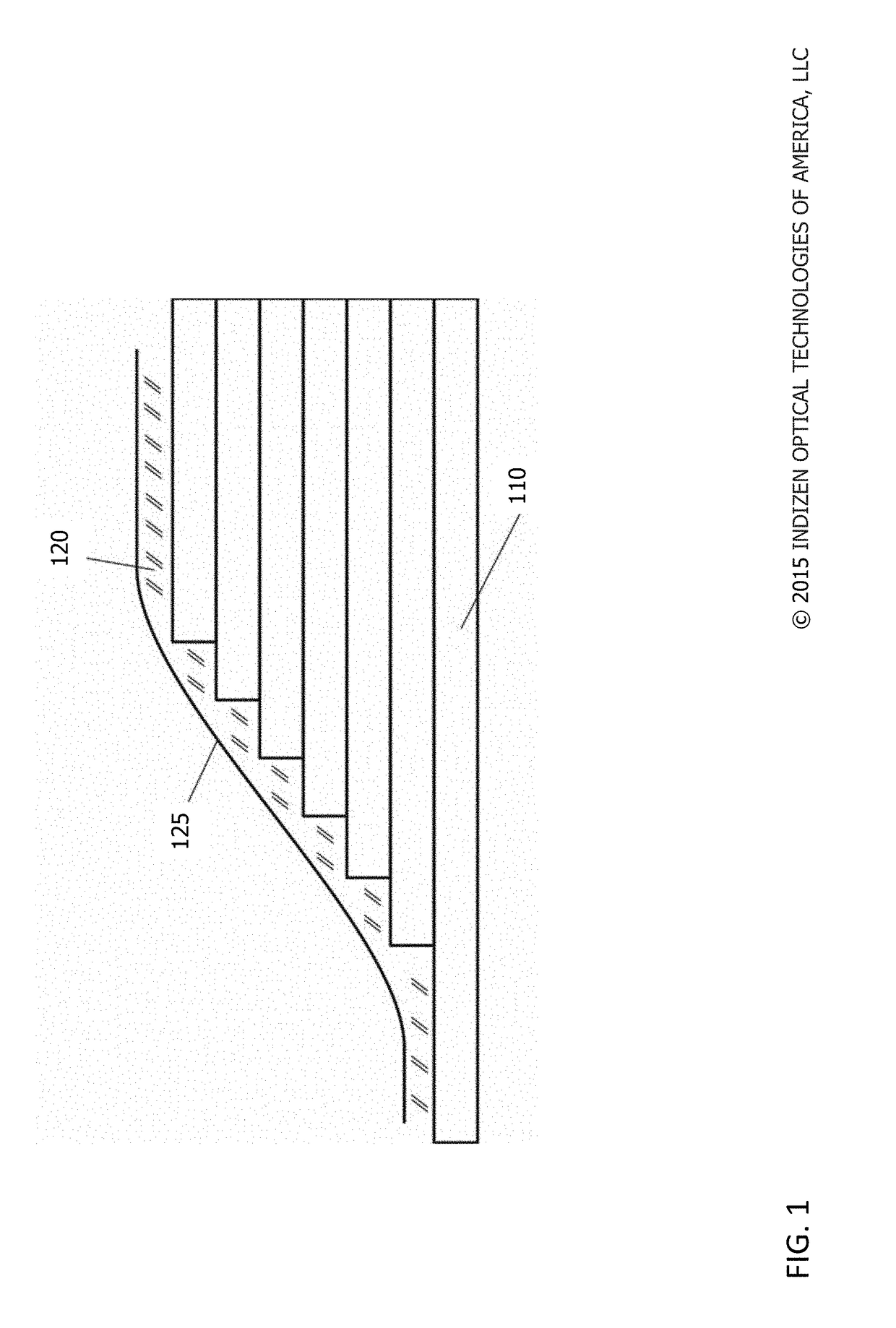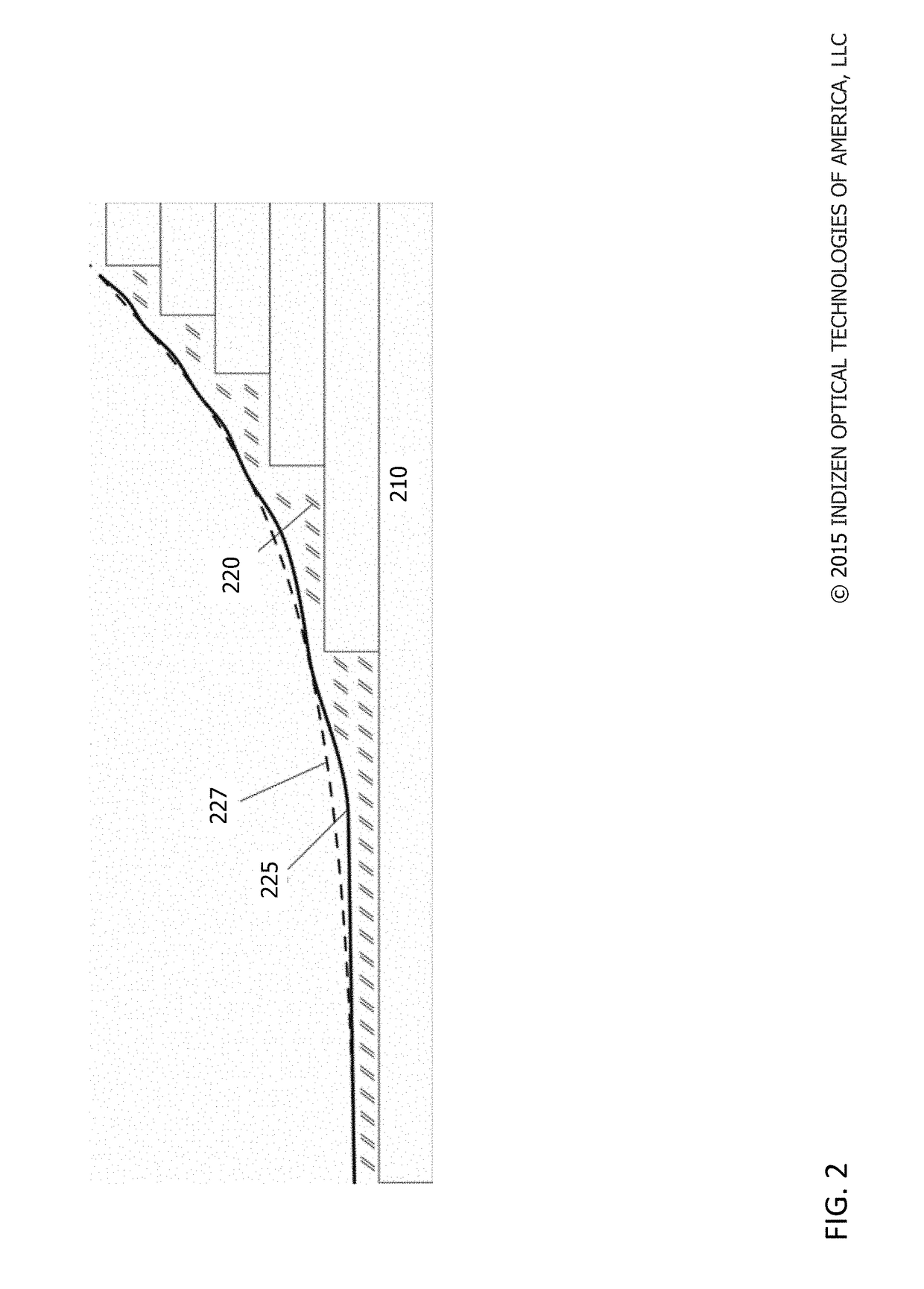Smoothing of 3D printed lenses
a 3d printing and lens technology, applied in the field of ophthalmic lens making, can solve the problems of expensive consumables, complicated and expensive machinery to ensure the accuracy level required, and expensive tooling and equipment for proper alignment,
- Summary
- Abstract
- Description
- Claims
- Application Information
AI Technical Summary
Benefits of technology
Problems solved by technology
Method used
Image
Examples
Embodiment Construction
[0020]An effective and innovative approach to improve the quality of 3D printed lens surfaces incorporating a simple and efficient post-processing method is described herein. Systems and methods for smoothing stepped lenses are described herein.
[0021]The lenses described below and shown in the drawings can be made in any suitable shape and geometry by an additive manufacturing process. Stereo lithography (SLA) is a commonly used method. SLA can be adapted to different growing strategies, can be used on top of different growing platforms and / or substrates, and is fast. Some lenses include two parts, one made by any process, not necessarily additive, and the other made using an additive process that generates layers and / or voxels that produce a stepped surface. In addition, some lenses may be comprised of layers of lenses produced by both traditional and additive processes. It is the stepped surface that results from the additive process that the systems and methods described herein a...
PUM
| Property | Measurement | Unit |
|---|---|---|
| wavelength | aaaaa | aaaaa |
| size | aaaaa | aaaaa |
| thickness | aaaaa | aaaaa |
Abstract
Description
Claims
Application Information
 Login to View More
Login to View More - R&D
- Intellectual Property
- Life Sciences
- Materials
- Tech Scout
- Unparalleled Data Quality
- Higher Quality Content
- 60% Fewer Hallucinations
Browse by: Latest US Patents, China's latest patents, Technical Efficacy Thesaurus, Application Domain, Technology Topic, Popular Technical Reports.
© 2025 PatSnap. All rights reserved.Legal|Privacy policy|Modern Slavery Act Transparency Statement|Sitemap|About US| Contact US: help@patsnap.com



